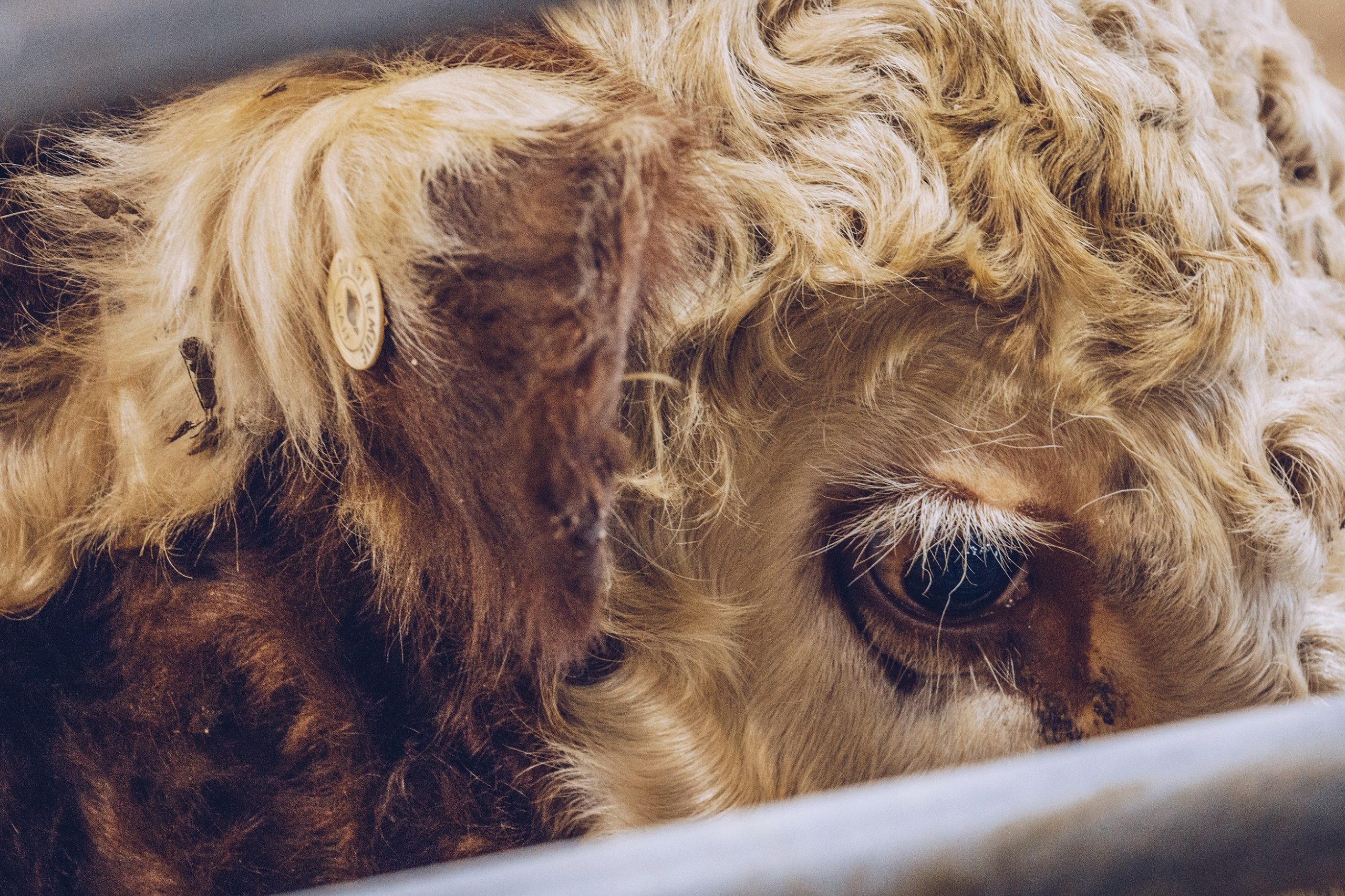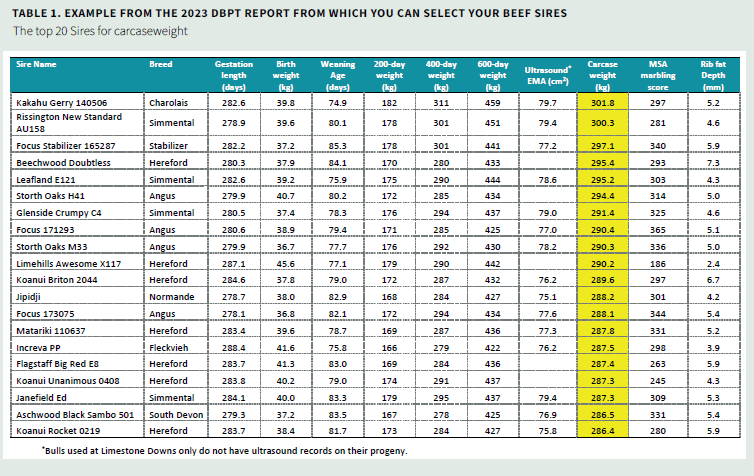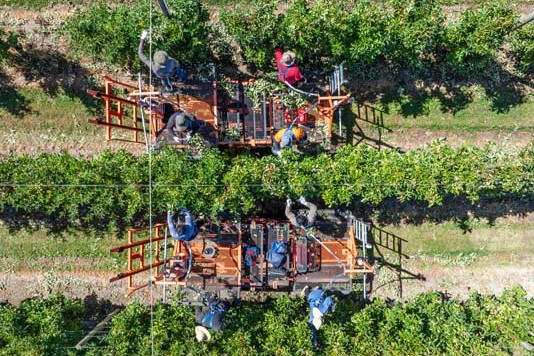Why dairy farmers should pick proven beef sires
Using proven beef sires over dairy cows adds value to surplus calves, AgFirst Agribusiness Consultant Bob Thomson writes.

Until recently, beef sire selection has largely been based on estimations and guesswork but that has now changed with the advent of the Dairy Beef Progeny Test Scheme, introduced in 2015.
Over the last eight years, 180 beef sires have been entered into the scheme by beef breeders who have selected their bulls based on their belief they will rank above others.
Each bull is mated to a representative group of mixed-age Kiwi-cross dairy cows by artificial insemination (AI) under the supervision of Massey University geneticists who are also responsible for independently processing and reporting the results.
The value of the Dairy Beef Progeny Test has not been well promoted and therefore dairy and beef farmers can be forgiven for not having heard about it.
While the scheme contains rich veins of valuable genetic information there remains the challenge as to how to better connect dairy farmers with beef farmers as the value of calves is often lost at the saleyards.
From a dairy farmer’s perspective, the value of a beef sire is determined by easy calving, the effect of the beef sire on gestation length, the length of time the offspring take to reach weaning, and how attractive the offspring are to potential purchasers.
The price of the beef sire is also a major consideration and consequently, beef sire performance is often compromised with ‘cheap and cheerful’ purchases which in turn devalues their progeny.
Without a doubt, there will be a requirement to rear surplus dairy calves beyond a week of age and many are now of the strong view that a ‘useful life’ will extend across the animal’s first summer and winter to at least a year of age.
The value of the beef-sired dairy calf will therefore need to afford the beef farmer a fast-growing finishing animal with proof of performance.
The best of the beef sires, as identified and proven within the Dairy Beef Progeny Test, provide the best value propositions by far.
There is no guesswork, and the scheme provides a continuous improvement model whereby each year up to 20 new sires are introduced for testing.
No other programme provides the necessary detail, especially in relation to dairy farmer requirements around calving ease, gestation length, and days (cost) to reach weaning weight.
The scheme also provides growth and carcase information essential for the beef finisher.
There are a couple of snags, and one is related to the fact that the best beef bulls are in a straw, just the same as the best dairy sires are also in a straw.
Historically the challenges of manual heat detection have been a ‘showstopper’ but that has now changed, and the solution is with electronic ‘wearables’, and the associated hardware.
One of the major advantages of the technology is its ability to take the hard slog out of extending AI.
It takes away the onus for manual heat detection, reduces the fatigue factor and frees more experienced people in the team.
The second snag is with the beef finisher who much prefers to buy a 200kg weaner in autumn rather than a 100kg weaner in spring.
There are solutions but each of these requires more investment in labour and additional supplementary feeds.
Given that surplus dairy calves are the dairy farmer’s problem, there is the possibility that the dairy farmer takes on this responsibility by rearing the calves themselves.
A quick Farmax dairy modelling exercise indicated the dairy herd would need to be reduced by 15% to accommodate the calves and so the purchase of a specialty calf-rearing block may be a better alternative.
Whatever decision, beef finishers have a strong preference for the bigger and older autumn weaner.
Also, when breeding high genetic merit beef-sired dairy calves a strong link through to beef finishers who know and appreciate the positive and profitable difference is needed.
HOW TO FIND THE BEST BEEF SIRES FOR GENERATING VALUABLE DAIRY BEEF CALVES
- Beef sires that are not performance-recorded should not be purchased and Group Breedplan is the recognised performance recording scheme in NZ. Herds recorded on Group Breedplan are genetically linked within each breed and therefore once you’ve found a high-performance herd you can select sires for purpose with confidence.
- Some beef breeds have Group Breedplan-generated Dairy Beef Indexes, others have Terminal Sire Indexes, and these are very useful guides. Unfortunately, with Group Breedplan, there is no multi-breed analysis so you cannot compare one breed against another.
- The Dairy Beef Progeny Test provides the best information for between-breed comparisons and details for this scheme can be found under ‘10 Fast Facts about the Dairy Beef Progeny Test’.
- While the Dairy Beef Progeny Test has identified the top beef sires, there is a real challenge with trying to track them down. LIC has listed some of these sires in their catalogue, but other semen companies do not appear to have listed or detailed any of these proven beef sires. It is strongly suggested that you challenge your semen provider to supply you with your beef sire of choice as identified through the DBPT.
- If all else fails, then directly contact the breeders of the top DBPT sires.
- Be wary of the ‘sales talk’ about beef sires in semen catalogues. You must have hardcore data from recognised performance and/or progeny test programmes.
- Farmers should challenge their semen companies to have their beef sires’ progeny tested through the Dairy Beef Progeny Test coupled with easy identification within their sale catalogues. This would make top sires easy to find plus remove the guesswork which currently besets beef sire selection.
10 HOT TIPS FOR TOP DAIRY BEEF PRODUCTION FROM SURPLUS DAIRY CALVES
- Take the time to fully understand what constitutes a valuable beef-sired calf from your dairy herd. Look up https://beeflambnz.com/knowledge-hub/PDF/value-dairy-beef-progeny-test-farm-systems-modelling-review.pdf and consider the opportunities.
- Understand that most dairy and beef farmers do not know about the value of high genetic merit beef sires and therefore you will need to be proactive in promoting the advantages.
- Develop a marketing plan for your beef-sired calves by:
- Promoting the value proposition to the purchasers of your calves
- Establish a business connection with beef finisher(s) who will likely purchase to specification and greatly appreciate the value afforded with high genetic merit calves.
- Consider that you may need to link through to the beef finisher via a professional calf rearer who will rear the calves to 100kg liveweight.
- Remember that beef finishers will prefer to buy dairy beef weaners in the autumn at ~200kg liveweight and not in the spring at 100kg liveweight. Can you help with that?
- Accept the fact that the best beef sires, that are proven, are only available via AI and ranked through the Dairy Beef Progeny Test (DBPT). These beef sires will reliably generate the most valuable dairy beef calves.
- Appreciate that electronic heat detection will reduce the stress of manual heat detection and will likely make whole herd AI a reality for you.
- Prepare a mating plan and determine which dairy cows/heifers will be mated to which AI beef sire. The DBPT has identified beef sires that can be matched to heifers and mixed-age cows.
- Select beef sire proven through the DBPT that contribute value to both your dairy herd and the beef finisher. (Look up blnzgenetics.com/progeny-tests/beef-progeny-tests).
- Understand that high-content Friesian cows/heifers are preferable because they contribute higher growth rates to their dairy beef calves. As you look to the future you may consider revising the breed makeup of your dairy cows.
- Understand that there is a very limited land area on which to finish the two million surplus dairy calves in NZ, your calves will be competing with others, and you will have the responsibility of arranging how they will be marketed so that the calves are reared to at least one-year of age.
- Accept that your dairy beef calves will not necessarily make a premium and satisfy yourself that you are creating a long-term solution for your surplus dairy calves.
FAST FACTS ABOUT DAIRY BEEF PRODUCTION IN NZ
- Cattle of dairy origin currently account for 50% of all beef-finishing cattle and 69% of all cattle processed in NZ.
- In 2022 there were 4.7 million dairy cows and 1.1 million beef breeding cows. The expansion of production forestry and carbon farming is placing downward pressure on available pastoral land which has been considered as traditional beef breeding land.
- Currently there are ~2-million surplus dairy calves that are processed before 10-days of age and it is widely considered that these calves will need to be reared to at least one-year of age by 2030 due to customer demands.
- In 2022 Kiwi-Cross cows made up ~59%, Holstein Friesian 25%, and Jersey ~8% of all dairy cows. High-content Friesian cows are considered the best dams for beef production because of their superior contribution to the growth rate of their progeny.
- Beef quality from dairy-beef cattle is not inferior to beef from traditional beef cattle as proven in science and practice. Practical examples are evident through Meat Company programs that reward beef quality, and these further prove that no one breed has an advantage.
- For beef farmers, finishing cattle of dairy origin has an advantage over traditional beef because the breeding component of GHG emissions is accounted for in the dairy herd and not the beef herd.
- The Dairy Beef Progeny Test is the only beef progeny test program in NZ that provides specific and proven information to dairy farmers about the value of beef bulls. For example, gestation length and number of days on feed to reach weaning weight.
- Dairy-beef finishing cattle from the top beef sires versus average beef sires have been shown to produce ~$200 more per hectare, largely through their progeny’s superior growth.
 FACTS ABOUT BEEF QUALITY
FACTS ABOUT BEEF QUALITY
- Quality can broadly be described as ‘fit for purpose’ and different markets require different beef quality attributes.
- Consumer taste panels indicate that marbling (intramuscular fat) with better scores for overall liking and tenderness but a threshold of approximately 5% is required for intramuscular fat to have an influence.
- Some breeds like Wagyu have been selected for their ability to have marbled meat however, differences in marbling between beef and dairy breeds are not often observed.
- An extensive review of beef quality (NZ Journal of Agricultural Research 2016) showed that dairy beef is not inferior to beef from traditional British beef breeds in terms of beef quality.
- Research shows that the expression of marbling is manifested at the highest levels when cattle are approaching 2-years of age and older when their growth rate slows down. However, low levels of marbling may be expressed in younger animals on high allowances of high metabolizable energy-containing feed.
- Although marbling is a consumer preference the vast majority of NZ beef is not highly marbled, and so other beef traits are important too.
- Tenderness is probably the most important beef attribute, and this can be partly determined by animal age at slaughter, and pre- and post-slaughter management.
- Younger animals are generally more tender as the collagen within their muscles is more heat soluble with cooking which reduces the toughness contribution of naturally occurring muscle connective tissue.
- The pH of beef post-slaughter has a major effect on beef tenderness. With levels of pH under 5.8 beef will be tender however when pH is between 5.8 and 6.2 this has been associated with greater toughness. Over pH 6.2 results in dark-cutting beef with poor shelf life. The level of pH is largely determined by the amount of glycogen that has been stored in the muscle’s pre-slaughter. Animals that are well-fed and not stressed will likely have high glycogen levels and therefore will achieve a muscle pH associated with desirable meat quality characteristics.
- Beef leanness is a desirable beef quality trait for some markets, and these have historically been associated with the hamburger trade, designated as manufacturing beef. Bull beef, in particular, is a key contributor to the manufacturing beef trade.
- Young lean tender beef may provide an avenue to accommodate surplus dairy-origin calves on existing pastoral land. Such cattle could be in a one-winter production system, allowing 50% more cattle to be finished compared to a two-winter system thereby assisting with the uptake of surplus dairy calves.

• Gestation length varied by 10 days for these top carcase weight 20 sires. The overall DBPT average for Gestation Length is 281.2 days.
• Birth weight varies by 8.9 kilograms with an overall DBPT average of 37.9 kilograms.
• There were no difficult births associated with these sires when mated over mixed-age Kiwi-cross dairy cows.
• Days to reach weaning weight varied by 10 days with an overall DBPT average of 84.1 days.
• Carcase weight is arguably the most important beef trait for beef finishers as that is predominantly what they’re paid for. The average carcase weight of all DBPT bulls tested to date is 277.4 kilograms.
• Note that nine different breeds are represented in the top 20 sires for carcase weight.
• Full details for the DBPT can be found at https://www.blnzgenetics.com/progeny-tests/beef-progeny-tests.





